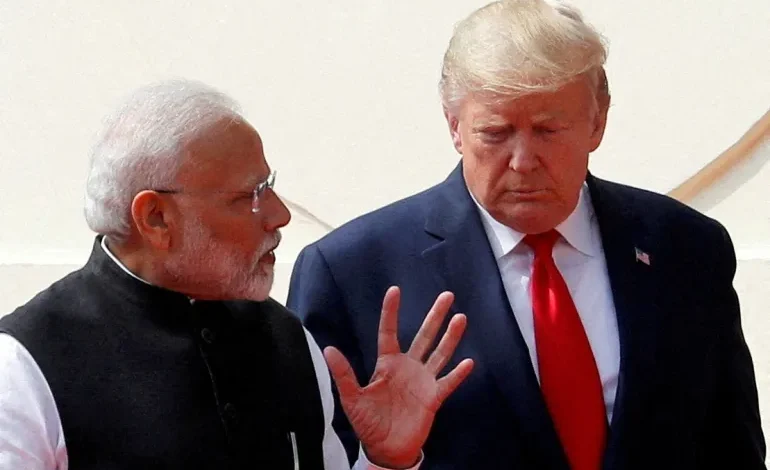
United States President Donald Trump’s 50 percent tariff on Indian goods officially came into force today, marking one of Washington’s harshest trade measures in recent years. The sweeping tariff, which follows two earlier rounds of duties imposed in July, is expected to impact trade worth billions of dollars and jeopardize hundreds of thousands of jobs in India.
The White House justified the move by pointing to New Delhi’s continued imports of Russian oil, despite repeated US warnings. The decision now risks straining ties between Washington and New Delhi, which until recently shared $212 billion in annual bilateral trade.
The Global Trade Research Initiative (GTRI), a New Delhi-based think tank, estimates that Indian exports to the US could fall from $86.5 billion this year to just $50 billion in 2026, according to news reports.
Labor-intensive industries—including textiles, garments, gems and jewelry, shrimp, leather goods, carpets, and handicrafts — are expected to see export losses of up to 70 percent. Analysts warn that small businesses in these sectors may collapse, with buyers shifting to Vietnam, Bangladesh, Pakistan, and other Asian economies.
“These are very vulnerable sectors employing millions of workers,” said MK Venu, founding editor of The Wire. “The blow will be devastating.”
Not all sectors are affected equally. Pharmaceuticals, one of India’s most valuable exports to the US, remain exempt due to their critical role in providing affordable generic drugs. Indian pharma shipments to the US reached $8.7 billion in 2024. Semiconductors, consumer electronics, steel, aluminium, and passenger vehicles will face tariffs under separate measures, rather than the blanket 50 percent rate.
Prime Minister Narendra Modi has vowed to protect affected industries, promising tax breaks, subsidies, and financial aid for exporters. He has also reiterated his push for self-reliance, framing the crisis as an opportunity to strengthen domestic production.
“Economic selfishness is on the rise globally, and we must not cry about our difficulties. India should become self-reliant not out of desperation, but out of pride,” Modi declared during his Independence Day speech.
The government has pledged to explore new markets in Latin America and the Middle East. Additional tax incentives, salary hikes for state employees, and financial relief for pensioners are also in the pipeline to soften the blow. Still, experts warn that subsidies will not be enough to offset the massive losses.
Economists estimate the tariffs could shave nearly 1 percent off India’s GDP—roughly $36 billion.
Trump has openly criticized India for its high import duties, particularly in agriculture, where tariffs average 39 percent compared to the US’s 4 percent. He accused India of “profiteering” from Russian oil, noting that imports surged from 1 percent before the Ukraine war to 37 percent today.
Despite five rounds of negotiations, talks collapsed after India refused to halt its Russian energy purchases. Trump’s administration argues that these imports indirectly fund Moscow’s war against Ukraine.
India, in turn, insists its decisions are based on market needs for its 1.4 billion citizens and accuses Washington of double standards, given that Europe and China continue to import Russian energy.
The tariff war risks pushing India closer to its traditional partners. New Delhi is preparing to welcome Russian President Vladimir Putin and has recently taken steps to improve relations with China, with whom it has $136 billion in trade.
Analysts warn that trust between Washington and New Delhi is at “an all-time low,” with India increasingly tilting towards BRICS and other non-Western blocs.
Follow The Times Kuwait on X, Instagram and Facebook for the latest news updates













